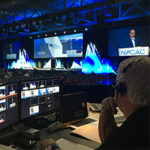Architect Witold Rybczynksi has just published a book called Makeshift Metropolis: Ideas About Cities. In an article in Slate that was adapted from the book, Rybczynksi traces the development of the American city from compact, densely populated, heavily industrial environment to decentralized, far-flung metropolitan area. It’s an interesting read, and comes with the added benefit of validating this thing of ours:
Virtually every technological innovation of the last 50 years has facilitated, if not actually encouraged, urban dispersal. But the long-term effects of new technologies are often unpredictable. The telephone is, on the face of it, a decentralizing device. Yet telephone communication made working in high-rise office buildings practicable, which in turn produced the concentrated central business district. … Laptops, personal digital assistants, and cell phones are held to be the tips of a great dispersal iceberg, but the migration of work to the motel room and the home office has been accompanied by a countervailing trend: the need for face-to-face contact. That is why there are more conferences, retreats, and conventions than ever before.
What do you think? Does technology create an ever-increasing demand for face-to-face interaction? If it does, is there an endpoint — where technology will become sufficiently advanced to replicate face-to-face interaction perfect?




